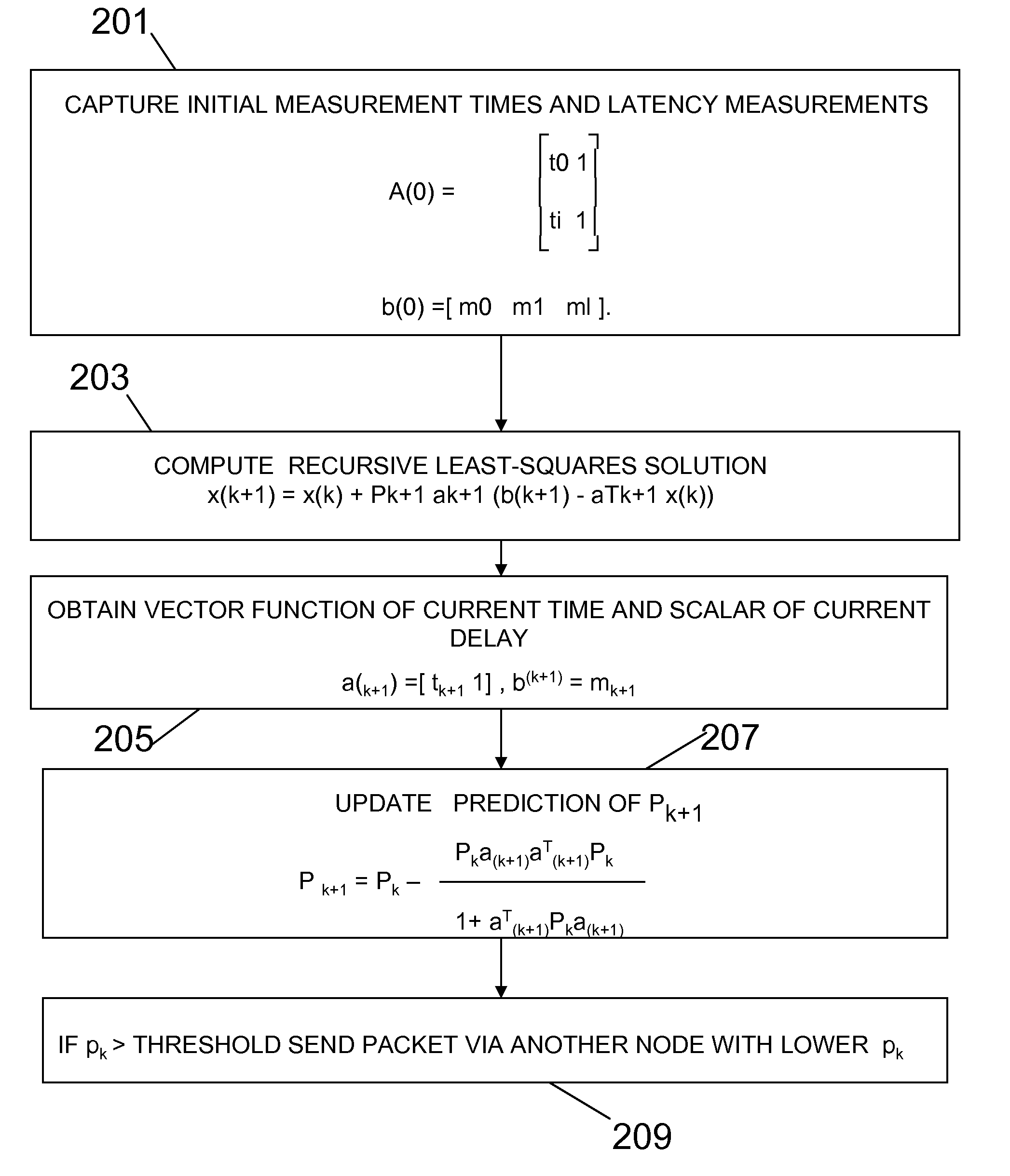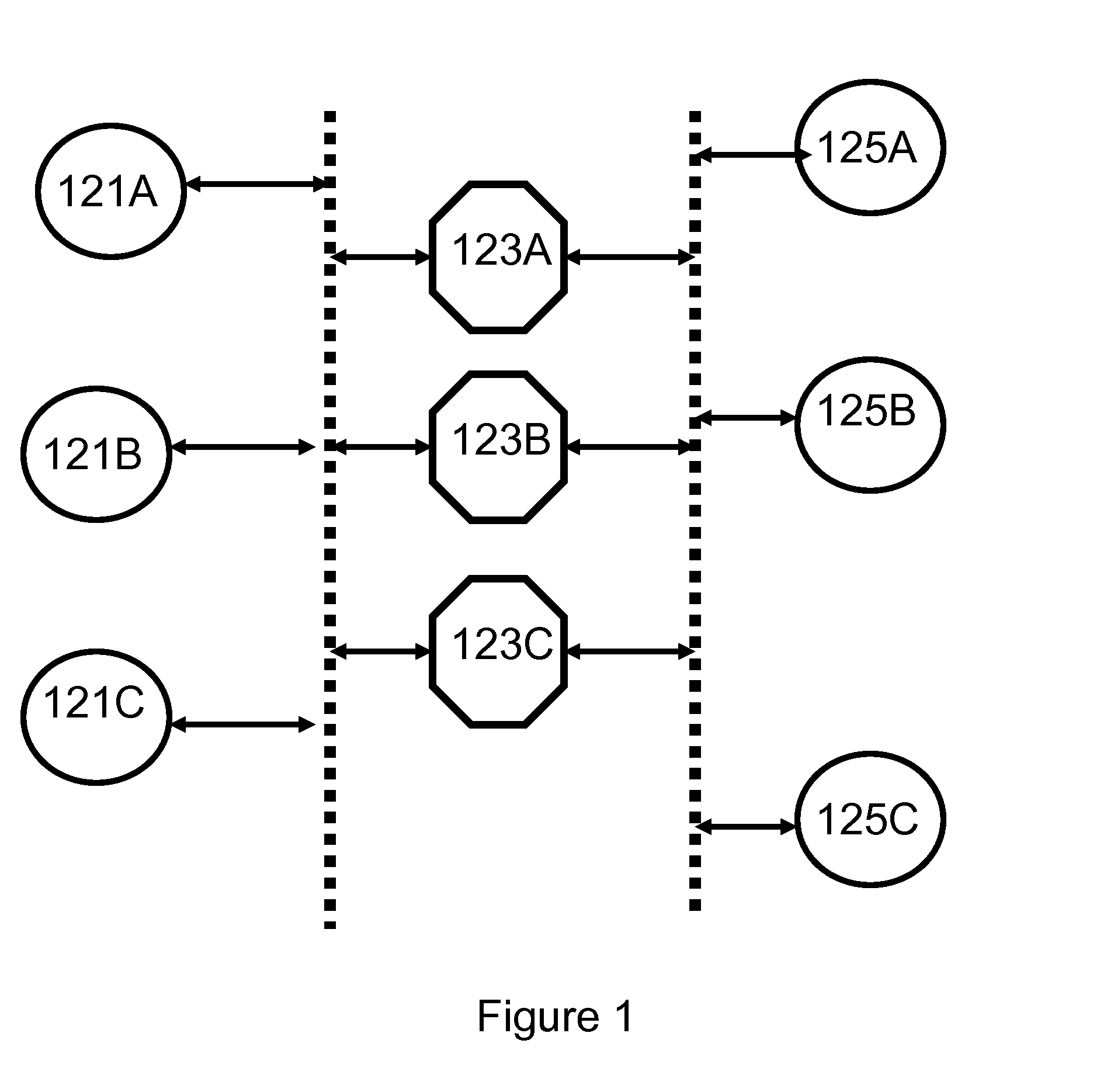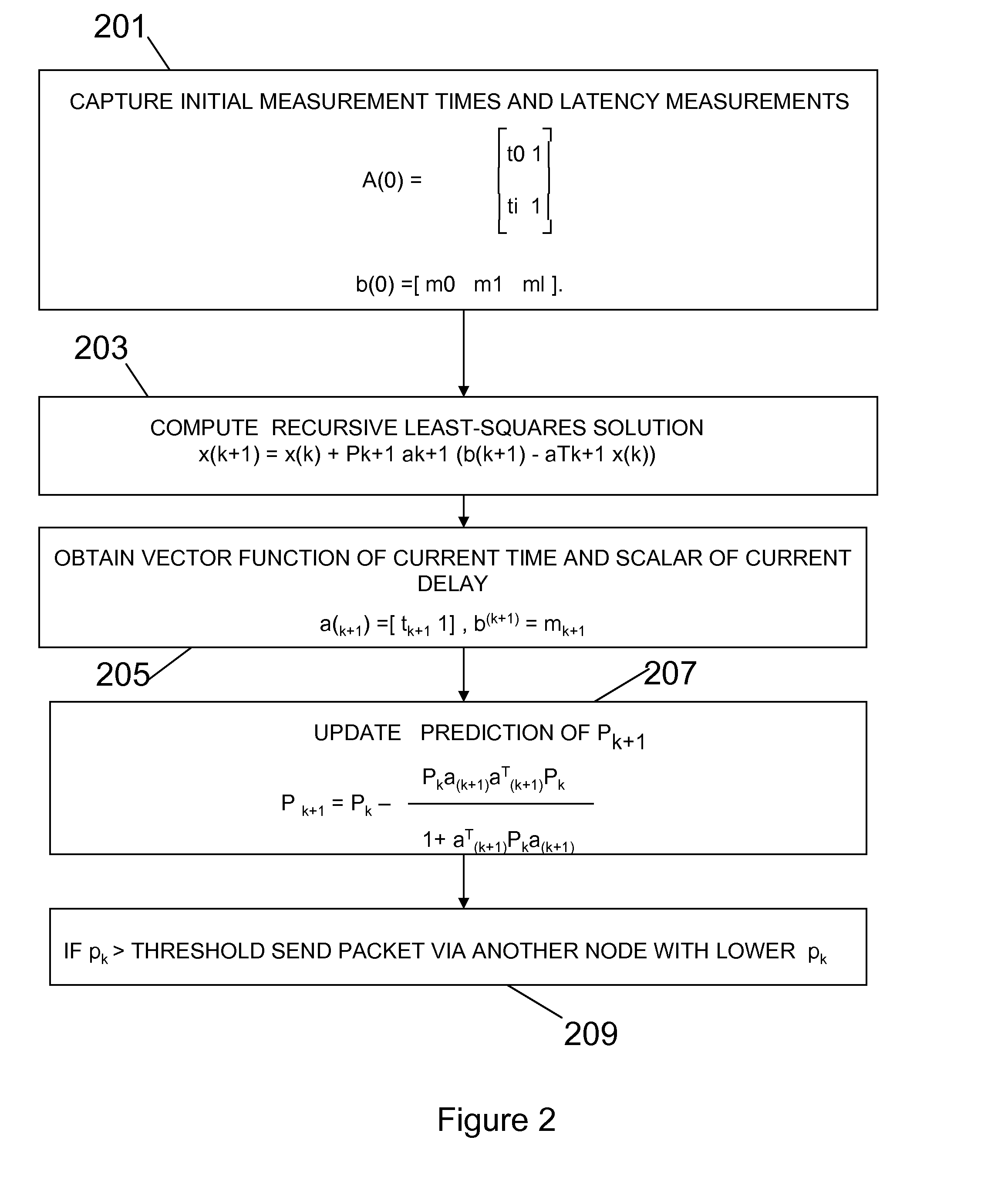Distributed message routing in a virtualized messaging system using recursive least squares links cost estimation with choke points
a virtualized messaging and cost estimation technology, applied in data switching networks, frequency-division multiplexes, instruments, etc., can solve problems such as race conditions, limited bandwidth for processing messages, and well-known performance issues of technique alone, so as to minimize round trip message latency, efficient and scalable
- Summary
- Abstract
- Description
- Claims
- Application Information
AI Technical Summary
Benefits of technology
Problems solved by technology
Method used
Image
Examples
Embodiment Construction
[0024]The invention described herein controls routing of message packets from one node, e.g., a requester node, in a network to another node, e.g., a provider node in the network, through the network from the requester node, i.e., the origin node to a provider node, i.e., the destination node using a chosen path through the network. FIG. 1 is a high level schematic diagram of a packet network 101 with nodes, including requester nodes 121A, 121B, and 121C associated with Routing Agent Software, and provider nodes 125A, 125B, and 125C, and ESB nodes as intermediate nodes 123A, 123B, and 123C. The requester nodes 121A, 121B, and 121C, the ESB intermediate nodes 123A, 123B, and 123C, and the provider nodes, 125A, 125B, and 125C are all characterized by the presence of processors, memory, and communications interfaces for data and control.
[0025]Consider the system represented in FIG. 1, above. A requester, as requester 121A, 121B, or 121C, requests an ESB node to send a packet to a provi...
PUM
 Login to View More
Login to View More Abstract
Description
Claims
Application Information
 Login to View More
Login to View More - R&D
- Intellectual Property
- Life Sciences
- Materials
- Tech Scout
- Unparalleled Data Quality
- Higher Quality Content
- 60% Fewer Hallucinations
Browse by: Latest US Patents, China's latest patents, Technical Efficacy Thesaurus, Application Domain, Technology Topic, Popular Technical Reports.
© 2025 PatSnap. All rights reserved.Legal|Privacy policy|Modern Slavery Act Transparency Statement|Sitemap|About US| Contact US: help@patsnap.com



